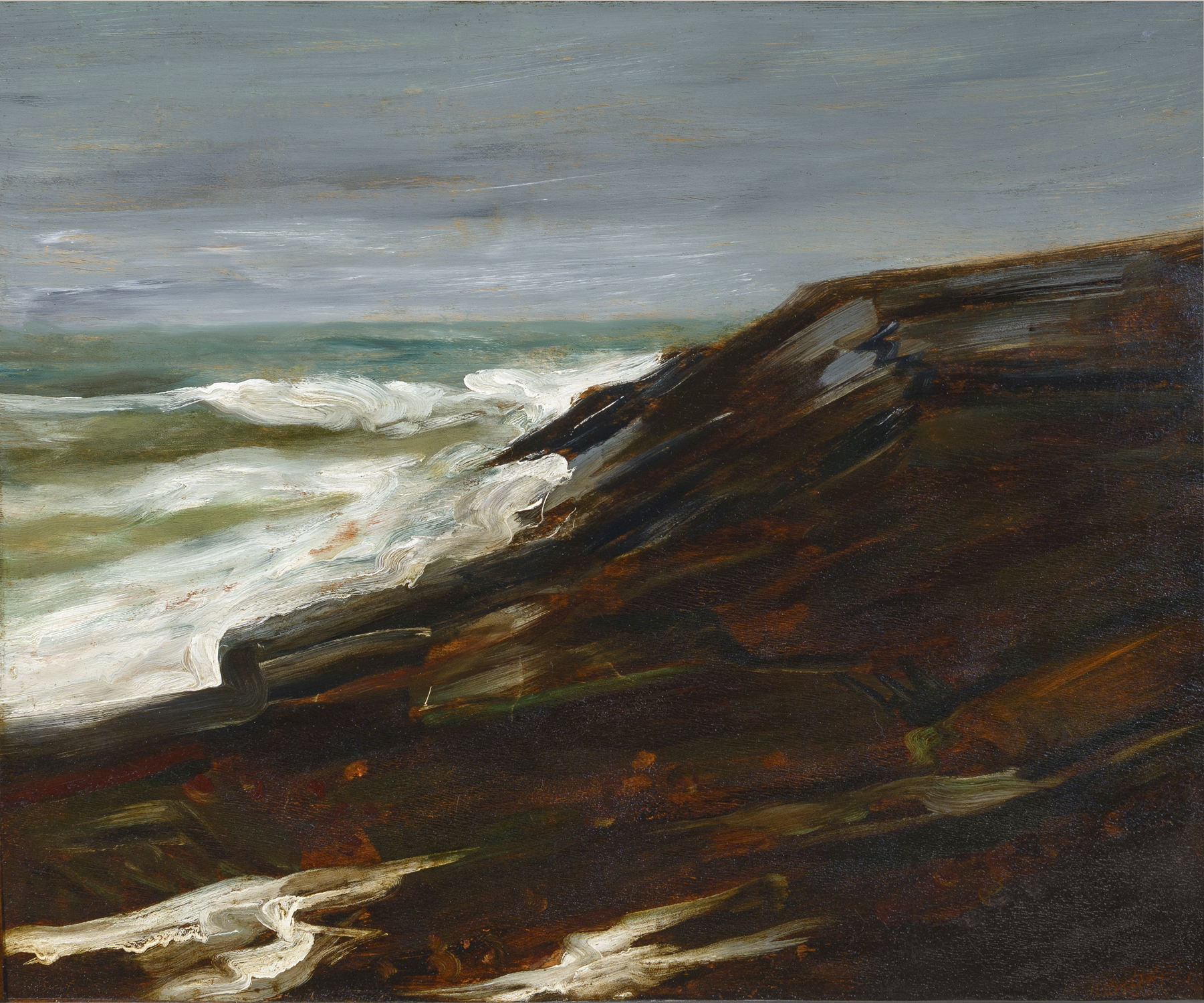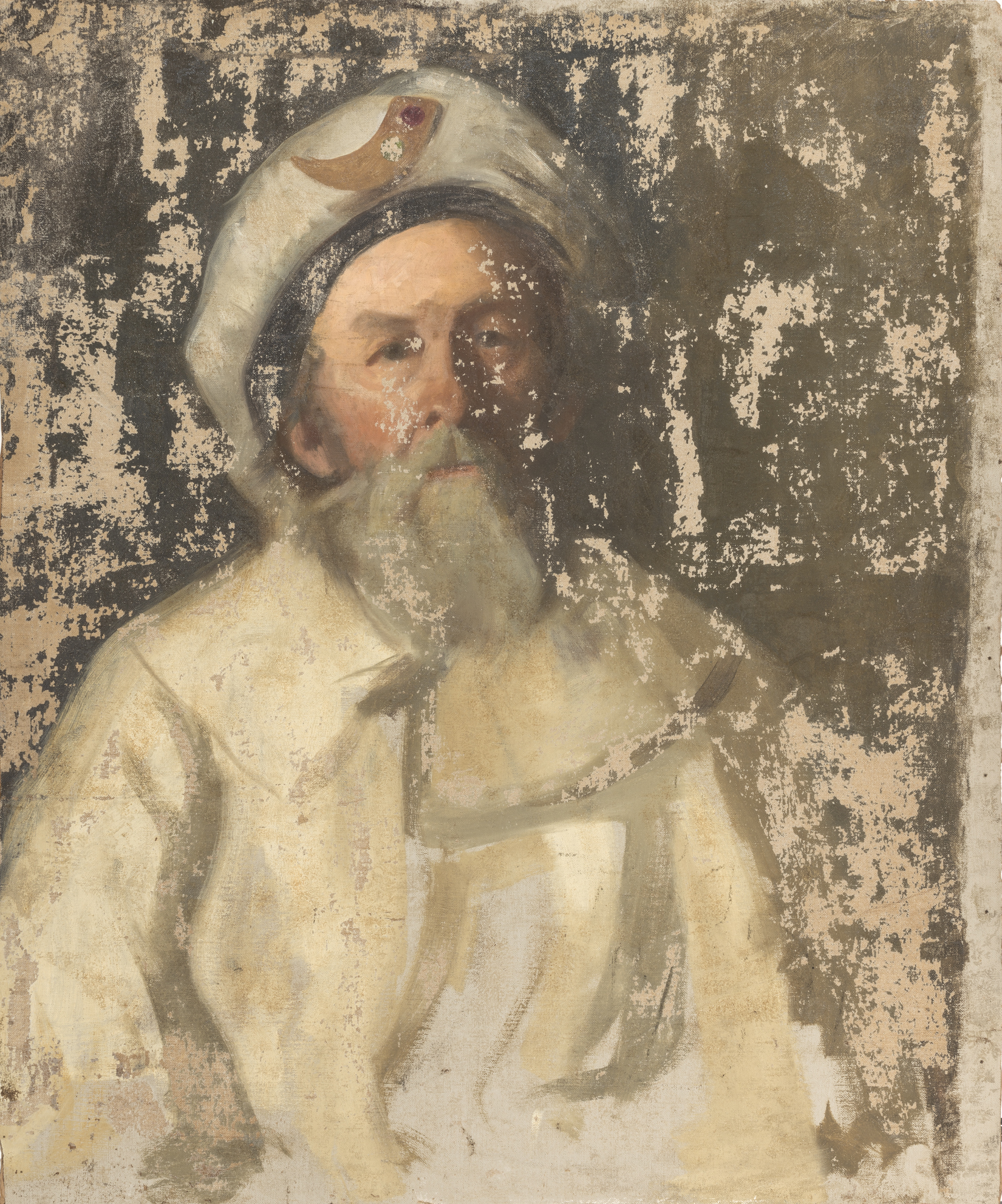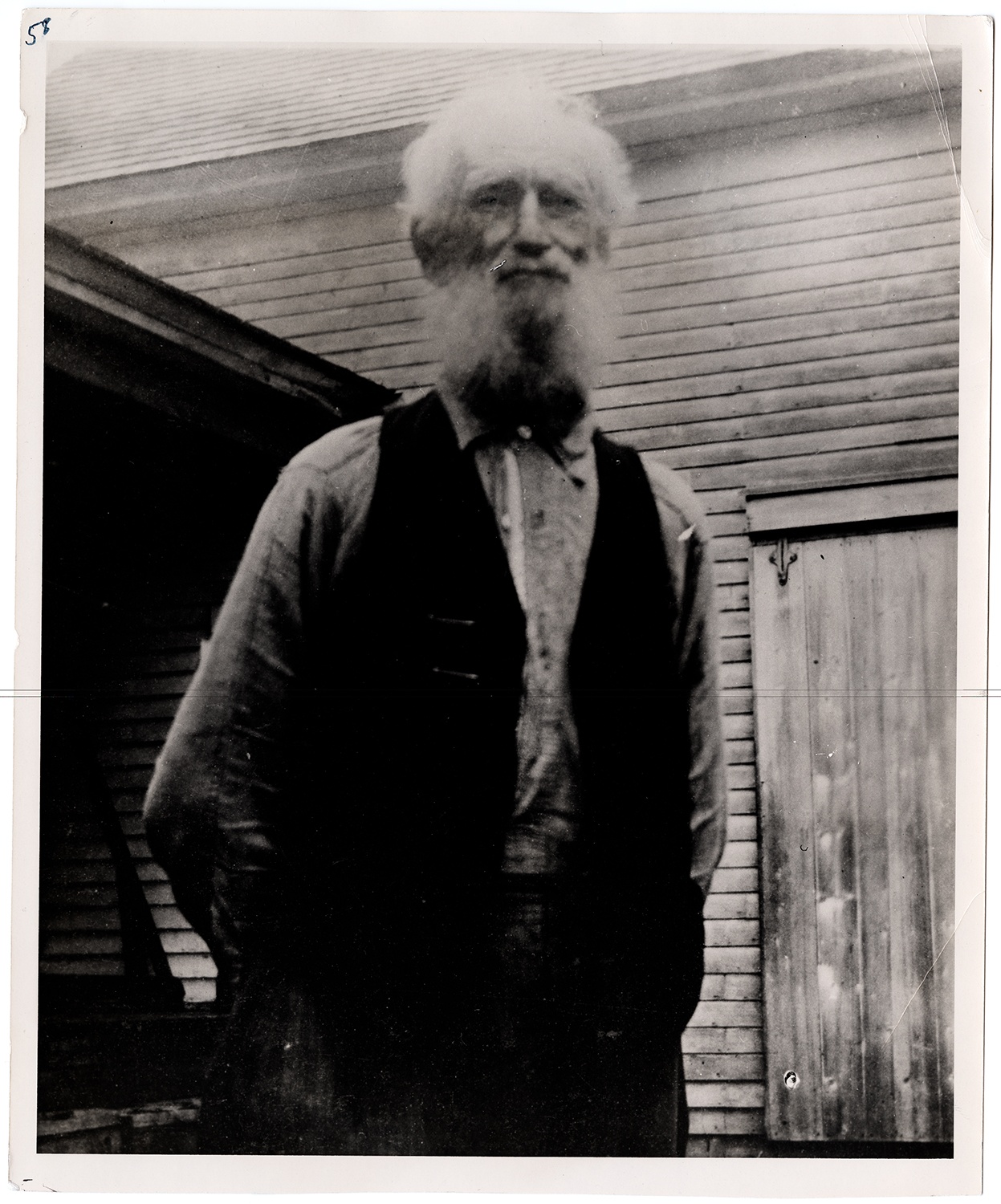A Painting in Question
Fifty years ago, the owner of this work was flipping through a stack of framed artwork at a small auction house in northern Virginia when he spotted something he believed to be special: an oil painting of a rough sea crashing into cliffs, signed HOMER. Since that time, he has been working to authenticate the painting as a genuine work by American artist Winslow Homer (1836−1910).
The work is similar to another by Homer hanging in the Smithsonian American Art Museum, High Cliff, Coast of Maine, which was painted in 1894 and depicts the view from Homer’s home and studio on Prouts Neck in Scarborough, Maine. Could this be a preliminary version, or sketch, of the more famous work that never made it into the catalogue raisonné?
This painting was purchased at an auction in northern Virginia in 1961. The owner was told by an expert at the National Gallery of Art, “It is not impossible that this is a genuine work of Winslow Homer.” The owner has “lived for more than 50 years on those words.” The painting has been the subject of keen scrutiny and scientific analysis, but experts remain at odds over the attribution.
Untitled seascape; 19th century
Oil on cross-laminate veneer panel
Private collection
Winslow Homer (1836−1910), considered to be one of the finest American artists of the 19th century, was known for his robust depictions of nature. In High Cliff, Coast of Maine, the ocean wages a mighty and relentless assault on a rocky cliff at Prouts Neck, one of the artist’s favorite spots on the coast. Compare this painting (above right) to the other painting (above left). Do you think that they could have been painted by the same artist? Do you think that this could be a final version and the other one an earlier sketch?
High Cliff, Coast of Maine
Winslow Homer; 1894
Smithsonian American Art Museum, Gift of William T. Evans
Prosecution
A photograph of the painting was shown to a leading American art historian, an expert on Winslow Homer who was working on a catalogue raisonné―a record of all Homer’s known and verified works. His opinion was that the style, brushwork, and dubious signature led him to believe that this was one of a large number of works falsely attributed to Homer.
The oil painting is on a cross-laminate panel, not canvas, as was more typical of Homer.
It is very thinly painted, with no ground layer, and was painted quickly with very fluid brush strokes. No effort has been made to delineate the texture of the rocks or the water, which is characteristic of Homer’s work.
There is no known history of ownership of this painting before it was purchased in 1961. The auction house has no record of who consigned it or how it came to be auctioned.
Defense
The signature has been examined in ultraviolet and infrared light. It is etched into the paint layer, and appears to be part of the craquelure of the work.
The painting was originally backed with canvas. When it was peeled away, a portrait of an elderly, white-bearded man appeared. The ghostly image, suffering from paint loss from being attached face-down on the back of the painting, bears a striking resemblance to one of Homer’s favorite models, John Gatchell.
Analysis by infrared spectroscopy revealed that the glue used between the panel and backing canvas contains a protein, suggesting they were stuck together with natural hide glues rather than a synthetic adhesive, which would have postdated Homer’s lifetime.
All the pigments identified in this painting are appropriate for the 1890s.
Homer is known to have painted this exact vista from his home and studio in Prouts Neck, Maine.
This portrait was found adhered to the back of the untitled seascape . Although it suffers from great loss, it is thought to depict John Gatchell, who became Homer’s favorite model. Compare this portrait to the photograph below. Do you agree?
Untitled portrait; 19th century
Oil on canvas
Private collection
John Gatchell, a local Scarboro resident, was often employed by Homer as a handyman and model. It is said that Homer felt sorry for the old man, who came to be the most famous of his models. Gatchell was an alcoholic and seldom made enough doing odd jobs to support his seven sons. Although Gatchell remained reasonably sober during the 1890s, when he often worked for Homer, he became increasingly unreliable. In 1901 Homer’s diary included several days of the same frustrated entry: “No Gatchell!”
Photo of John Gatchell
Courtesy of Bowdoin College Museum of Art, Gift of the Homer Family
What is your verdict? Genuine or fake?
Bibliography
Mass, Jennifer L. “Rocky Seascape and Portrait of an Old Man—Two Paintings in the Style of Winslow Homer.” Report 1620, Scientific Analysis of Fine Art, July 12, 2016.
Shapira, Ian. “Is a $20 Auction Find a Winslow Homer or a Forgery?” Washington Post, October 28, 2015. https://www.washingtonpost.com/local/is-a-20-auction-find-a-winslow-homer-or-a-forgery/2015/10/28/1c7482a4-79ba-11e5-b9c1-f03c48c96ac2_story.html?utm_term=.6410705066ff




